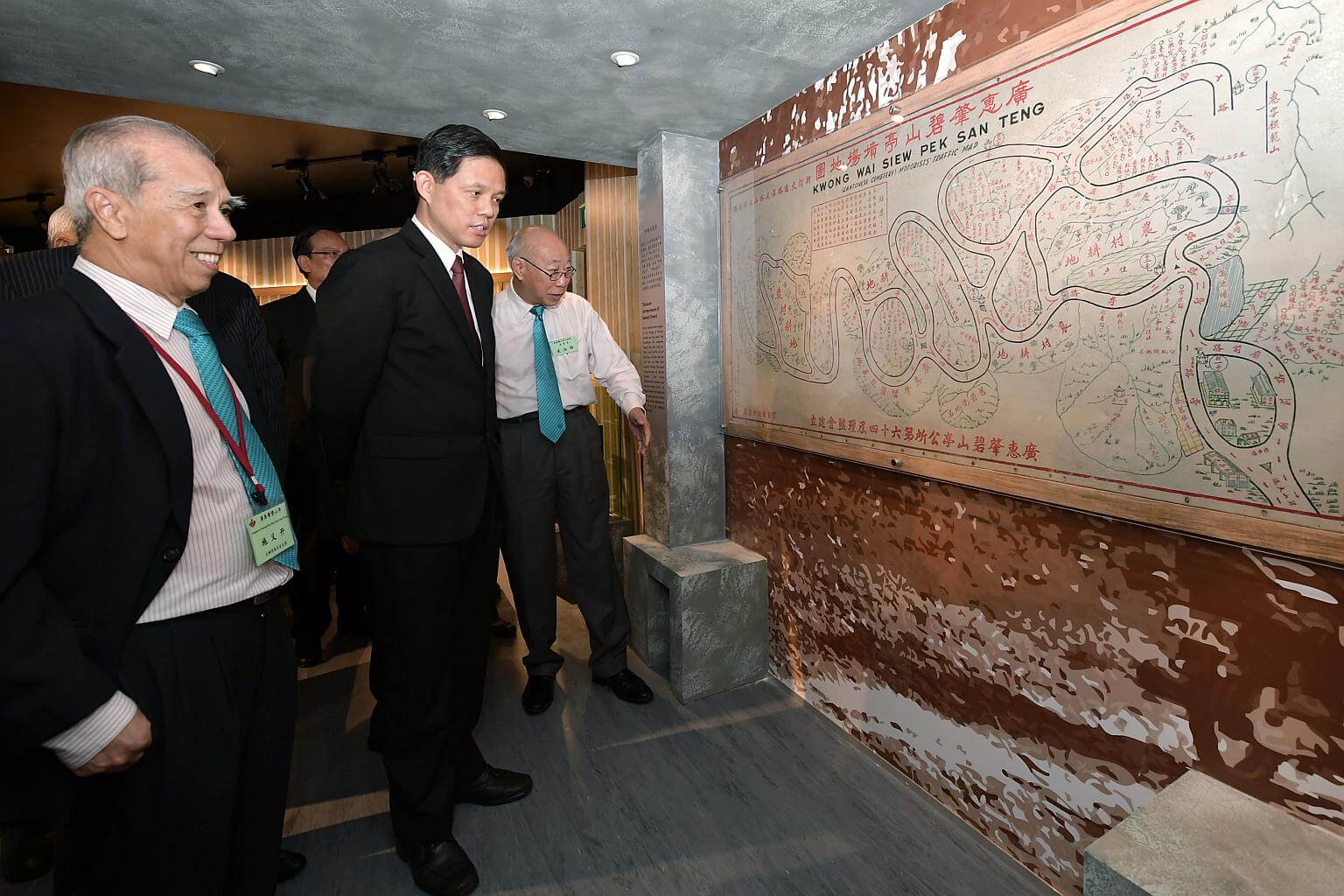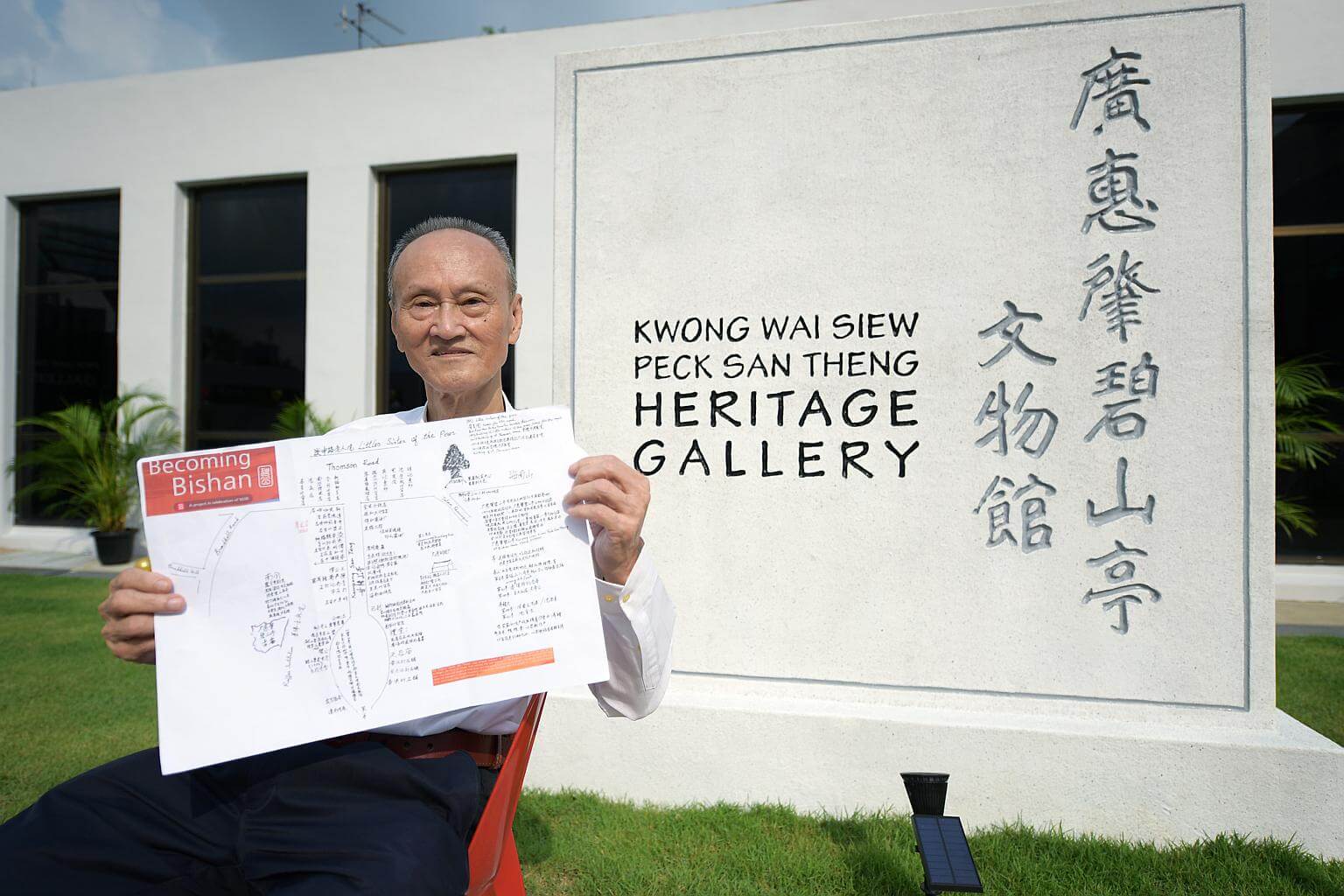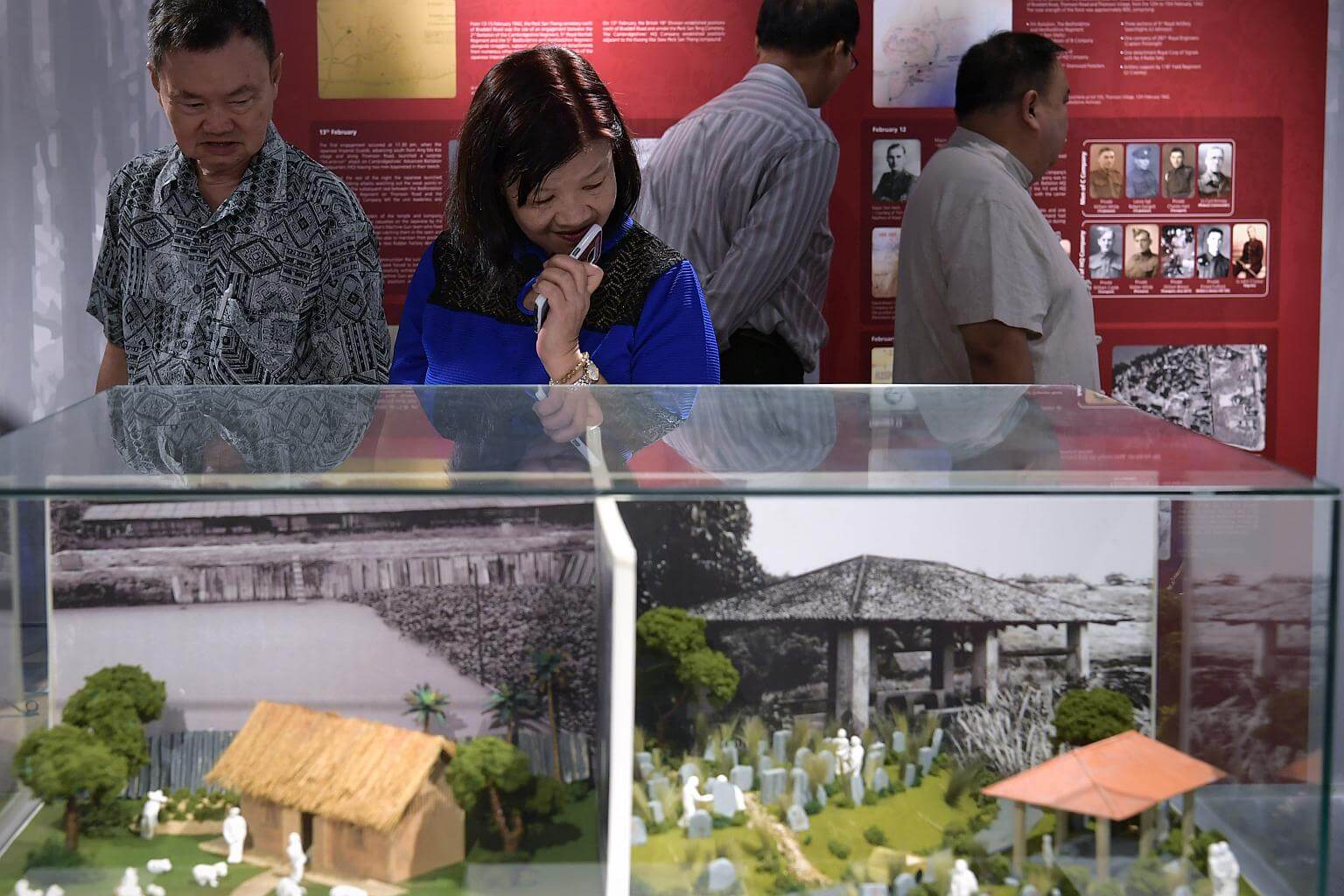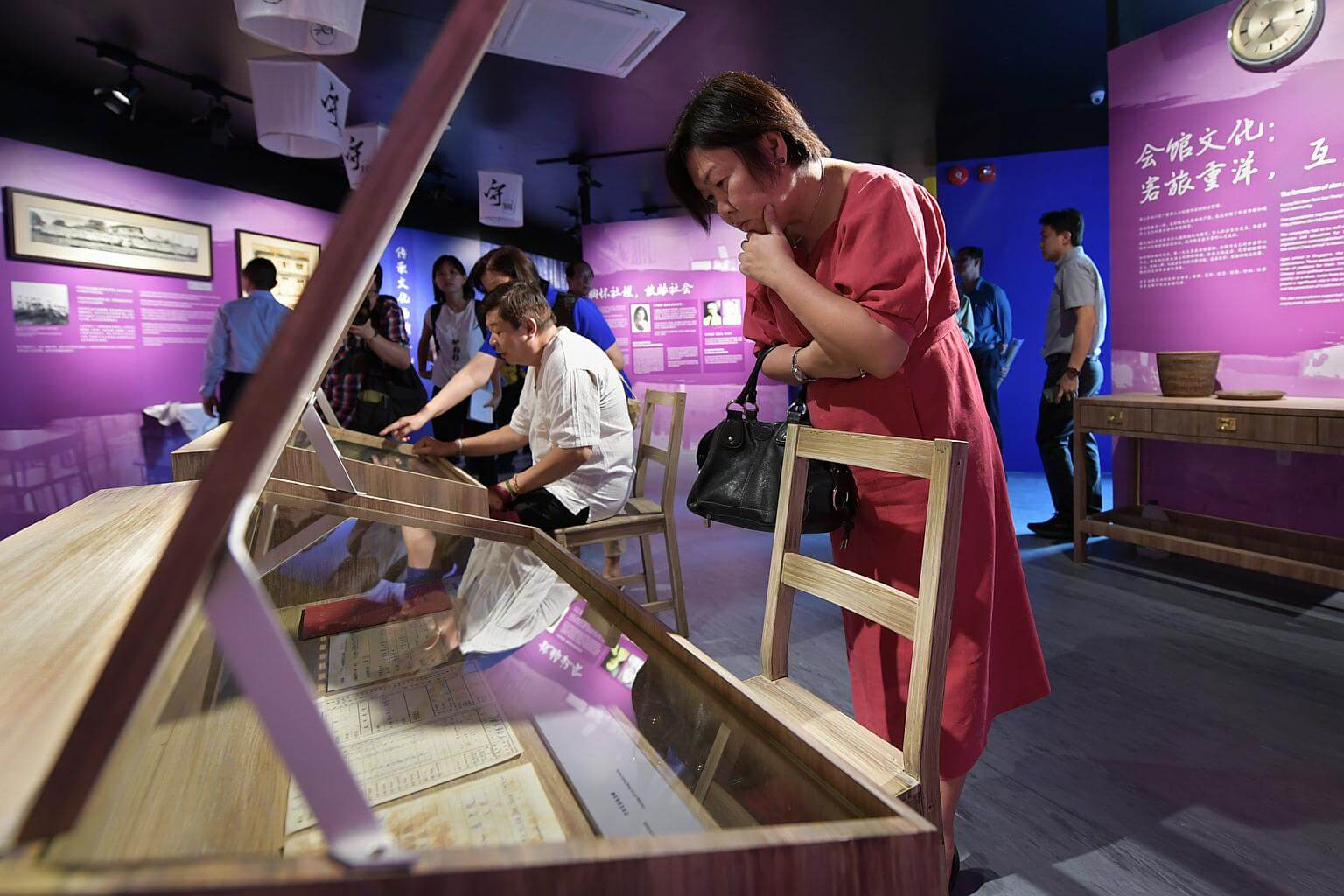Kwong Wai Siew Peck San Theng columbarium in Bishan opens gallery to showcase 150-year history
Sign up now: Get ST's newsletters delivered to your inbox

Kwong Wai Siew Peck San Theng was opened by Minister for Trade and Industry Chan Chun Sing on June 3, 2018.
ST PHOTO: NG SOR LUAN
Follow topic:
SINGAPORE - More than two-thirds of the current Bishan town was once occupied by a village and a cemetery.
The story of Kampong San Teng is now being told in a new $700,000 heritage gallery at the grounds of Kwong Wai Siew Peck San Theng in Bishan Lane, a cultural organisation site that holds two temples and a columbarium.
The 560sq m gallery, comprising educational boards, artefacts, photographs and electronic displays, was opened by Minister for Trade and Industry Chan Chun Sing on Sunday morning (June 3).
Redevelopment works for Bishan town began in 1979, and some of the cremated remains were moved to the columbarium.
Gallery curator Lee Kok Leong, a 56-year-old freelance cultural and historical researcher, said: "We hope that people can learn more about their culture and Singapore's history after paying respects to their ancestors."
Besides showcasing elements of the former kampong, including a recreation of an attap house there, the gallery also boasts other artefacts from Singapore's history, including uniforms worn by British and Japanese soldiers, and cultural relics, such as a temple bell donated by a Chinese clan.
Mr Chan said Kwong Wai Siew Peck San Theng- which is made up of 16 clan associations - holds a special and personal significance for him.

As a primary school pupil growing up in a single-parent household, where his mother worked as a machine-operator, he received bursaries of between $60 and more than $100 to help him through school.
He said: "They gave me bursaries to help me complete my studies. This is the kind of spirit that our forefathers had. They're not just an organisation for the Chinese community, taking care of Chinese interests.
"More importantly, they've always reached out to help people from all walks of life, from all races. This is the kind of spirit we hope to pass to our next generation and more."

Mr Chan added that a large part of the land where Bishan town now sits once belonged to the clan associations. But they returned the land to contribute to national development.
"It is how Peck San Theng, as an institution, represents the kind of contributions, the kind of giving spirit, that represents the best of Singapore."
Former Kampong San Teng resident Chua Eik Chuan, 80, who was at Sunday's event, said: "The gallery is good. So the next generation won't forget. Many young people now can speak only English, and they don't know their roots well."

Mr Kuan Ru Jing, English secretary for Kwong Wai Siew Peck San Theng, said the gallery will showcase the organisation's rich 150-year history.
"We will monitor the response from Singapore, and in future, we hope to work with the tourism authorities to put this gallery on the map."
Mr Kuan, 70, added: "We want to change the perception that the columbarium is just for the dead. There is rich, living culture here too."
Admission to the gallery is free. It is open from 9.30am to 4pm every day except on public holidays.

